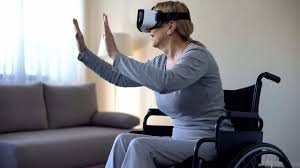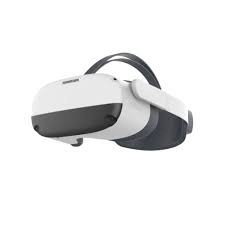How Virtual Reality Is Transforming Care for FND and Sensory Processing Disorders
Virtual reality (VR) is emerging as a powerful tool to help individuals with Functional Neurological Disorder (FND) and related sensory issues regain control over their bodies and alleviate distressing symptoms. By immersing users in controlled, adaptable environments, VR therapies can target core mechanisms underlying FND—such as disrupted sense of agency and altered sensory processing—while offering engaging, multisensory experiences that traditional therapies often lack.
1. Enhancing Sense of Agency Through Virtual Mirror Feedback
A hallmark of motor FND is a diminished feeling of control over one’s own movements. VR mirror visual feedback (MVF) leverages this by showing patients a virtual limb that either synchronizes or desynchronizes with their intended motion. In a single-blind randomized controlled feasibility study, FND participants who received eight sessions of VR MVF (plus exposure therapy to personal triggers) demonstrated high completion rates (86%) and reported reductions in symptom frequency and disability, without adverse events . Mechanistically, fMRI work using the “virtual hand illusion” found that asynchronous hand feedback in FND patients failed to engage the right dorsolateral prefrontal cortex and presupplementary motor area the way it does in healthy controls—highlighting VR’s ability to probe neural circuits of agency .
2. Distraction and Pain Modulation in Chronic Sensory Conditions
Beyond motor symptoms, VR’s immersive qualities can distract from chronic pain and sensory discomfort. Although most research focuses on acute pain relief, preliminary evidence suggests moderate effect sizes for chronic musculoskeletal and neuropathic pain when VR is used repeatedly . VR applications that simulate soothing landscapes or engaging games can reduce pain perception by shifting attention, modulating laser-evoked potentials in migraine patients, and improving quality of life in fibromyalgia cohorts .
3. Treating Persistent Postural-Perceptual Dizziness (PPPD)
Persistent Postural-Perceptual Dizziness—a condition characterized by chronic dizziness and sensory hypersensitivity—responds well to graded exposure in VR. Controlled VR scenarios that gradually challenge balance (e.g., crowded virtual streets or moving environments) help patients recalibrate their vestibular and visual integration systems. Early pilot work shows improvements in dizziness severity and functional mobility after multi-session VR exposure, though larger trials are ongoing to confirm durability .
4. Cognitive Rehabilitation and Attention Training
FND often co-occurs with cognitive symptoms—such as attention deficits and memory problems—that compound disability. VR cognitive rehabilitation programs, originally developed for traumatic brain injury, are being adapted for FND. These incorporate interactive tasks in virtual classrooms or kitchens, requiring patients to multitask, remember instructions, and manage distractions. By adjusting challenge levels in real time, VR platforms promote neural plasticity in attention networks and working memory circuits .
5. Remote and Self-Help Delivery Models
One major advantage of VR is the potential for home-based treatment. Standalone headsets (e.g., Oculus Quest) enable remote delivery of therapeutic modules, reducing clinic visits and increasing access—especially for patients with mobility limitations or those in underserved areas. Feasibility studies in stroke recovery hint at high acceptability of VR-guided rehabilitation on acute care units, suggesting similar models could bridge gaps in FND care .
Evidence Overview
| Application | Study Type | Key Findings |
|---|---|---|
| Mirror Visual Feedback (MVF) | RCT feasibility (n=14) | 86% completion; symptom/disability reductions; no adverse events |
| Virtual Hand Illusion | Mechanistic fMRI (n=41 FND vs controls) | Altered prefrontal and SMA engagement during asynchronous movement |
| Pain Distraction | Mixed chronic pain studies | Moderate effect sizes; improved pain severity and QOL in fibromyalgia |
Mechanisms of Action
- Neural Retraining: VR alters sensorimotor feedback loops, enhancing relearning of correct movement patterns and restoring agency.
- Attention Modulation: Immersive tasks shift cognitive focus away from distressing bodily sensations, reducing hypervigilance.
- Sensory Integration: Controlled multisensory stimuli help recalibrate over- or under-responsive vestibular, tactile, and proprioceptive systems.
- Engagement and Motivation: Gamified VR environments boost adherence compared to repetitive conventional exercises.
Challenges and Limitations
- Cybersickness: Up to 30% of users may experience nausea, dizziness, or headaches, requiring careful scenario design and gradual exposure.
- Hardware Accessibility: High-quality VR systems remain costly; insurance coverage for therapeutic VR is limited.
- Individual Variability: Optimal parameters (session length, frequency, content) must be personalized; “one-size-fits-all” protocols often underperform.
- Evidence Gaps: Most trials are small, lack long-term follow-up, and often omit placebo-controlled conditions, making it hard to isolate VR effects from expectancy.
Future Directions
- AI-Driven Adaptation: Integrating real-time physiological monitoring (e.g., heart rate, galvanic skin response) to adjust VR difficulty and sensory load automatically.
- Augmented Reality (AR) Hybrids: Blending VR with AR overlays could allow seamless transitions between virtual therapy and real-world tasks.
- Large-Scale RCTs: Rigorous multicenter trials with standardized outcome measures (e.g., FND-COM guidelines) are needed to establish efficacy and best practices.
- Tele-Rehabilitation Platforms: Robust, secure cloud-based ecosystems enabling clinicians to monitor progress, tweak programs, and engage patients remotely.
Conclusion
Virtual reality holds significant promise for individuals with FND and other sensory processing disorders by directly targeting neural mechanisms of agency, attention, and sensory integration. While early studies demonstrate feasibility, safety, and preliminary efficacy—particularly for mirror feedback therapies and pain distraction—larger, well-controlled trials are essential to cement VR’s role in routine care. Combined with customizable, home-based delivery and emerging AI-driven personalization, VR stands poised to revolutionize rehabilitation and empower patients to reclaim mobility, confidence, and quality of life.


